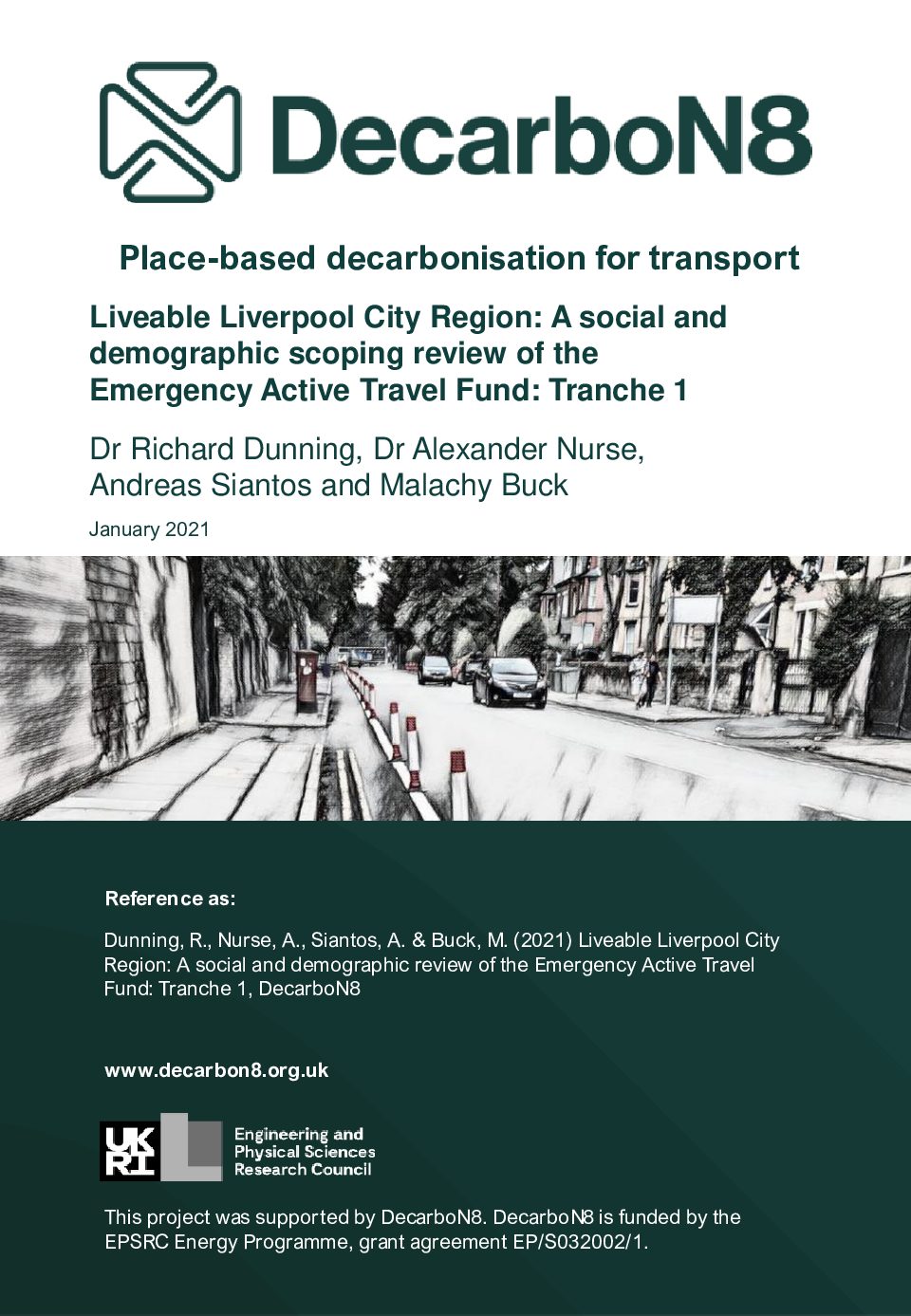Liveable Liverpool City Region: A social and demographic scoping review of the Emergency Active Travel Fund: Tranche 1
Authors: Richard Dunning, Alexander Nurse, Andreas Siantos and Malachy Buck (2021)
PDF (50 pages, 4 MB)
This research looks at the rapid reallocation of road space in relation to social and demographic context of Liverpool City Region and explores questions of societal readiness and acceptance of increased active travel. The report evaluates the First Tranche of the Emergency Active Travel Fund in Liverpool City Region and the rapid reallocation of road space from a social and demographic perspective.
Key Findings
This research looks at the rapid reallocation of road space in relation to social and demographic context of Liverpool City Region and explores questions of societal readiness and acceptance of increased active travel. The report evaluates the First Tranche of the Emergency Active Travel Fund in Liverpool City Region and the rapid reallocation of road space from a social
and demographic perspective. It draws on evidence from postcode level analysis of resident attitudes, interviews with bike
shop owners, analysis of bike mounted video camera footage.
The report indicates the necessity for multimethod analysis and the requirement for engaging with diffuse data sources that provide evidence of usage as well as attitudinal and perceptional data on rapid road space reallocation.
It is clear that the rapid road space reallocation undertaken in 2020 has supported some behaviour change in commuting away from carbon-based transport to active travel, and more significantly enabled an increase in leisure and recreation based active travel. Because of limited funding these interventions have been spatially limited and thus have supported some areas and groups in society most. However, they have also acted as an indicator of the significance of active travel and its potential for long term modal shift.
The report concludes that interventions are locally specific and future road space reallocation needs to take account of the
specific place context, of both local users and connections to the existing fabric of transportation.

